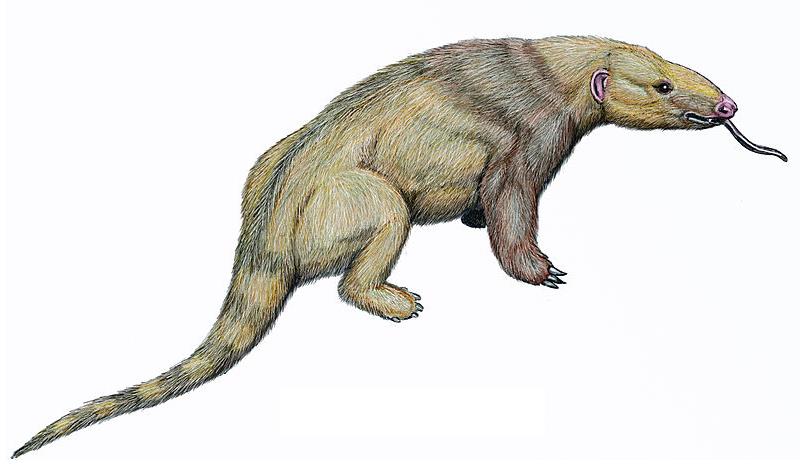|
Uromanis Tetradactyla
African tree pangolin (''Phataginus'') is a genus of African pangolins from subfamily small African pangolins (Phatagininae), within family Manidae. Its members are the more arboreal of the African pangolins. From 2010 to 2019, at least 895,000 pangolins from the genus ''Phataginus'' were illegally trafficked. The animal is hunted and poached for its scales and meat, and is often used in making traditional medicine in places such as China and Vietnam. Attempts to protect these mammals from trafficking and extinction are ongoing; unfortunately their slow reproduction rate stymies population recovery. Currently the tree pangolin is listed as vulnerable. All pangolin species have been listed as vulnerable, endangered, or critically endangered. Etymology Constantine Rafinesque (1821) formed the Neo-Latin generic name ''Phataginus'' from the French term ''phatagin'', adopted by Count Buffon (1763) after the reported local name ''phatagin'' or ''phatagen'' used in the East Indies. ... [...More Info...] [...Related Items...] OR: [Wikipedia] [Google] [Baidu] |
Miocene
The Miocene ( ) is the first epoch (geology), geological epoch of the Neogene Period and extends from about (Ma). The Miocene was named by Scottish geologist Charles Lyell; the name comes from the Greek words (', "less") and (', "new") and means "less recent" because it has 18% fewer modern marine invertebrates than the Pliocene has. The Miocene followed the Oligocene and preceded the Pliocene. As Earth went from the Oligocene through the Miocene and into the Pliocene, the climate slowly cooled towards a series of ice ages. The Miocene boundaries are not marked by distinct global events but by regionally defined transitions from the warmer Oligocene to the cooler Pliocene Epoch. During the Early Miocene, Afro-Arabia collided with Eurasia, severing the connection between the Mediterranean and Indian Oceans, and allowing the interchange of fauna between Eurasia and Africa, including the dispersal of proboscideans and Ape, hominoids into Eurasia. During the late Miocene, the conn ... [...More Info...] [...Related Items...] OR: [Wikipedia] [Google] [Baidu] |
Metacheiromys DB152-2
''Metacheiromys'' ("next to ''Cheiromys''") is an extinct genus of placental mammals from extinct paraphyletic subfamily Metacheiromyinae within extinct paraphyletic family Metacheiromyidae in extinct order Palaeanodonta, that lived in North America (what is now Wyoming) from the early to middle Eocene. Etymology The generic name means "next to ''Cheiromys''" because the scientist who saw the bones mistakenly thought that the animal was a primate with hands like those of the lemurs from genus ''Daubentonia'', whose synonym is ''Cheiromys''. Characteristics of taxa ''Metacheiromys'' was a small creature, and measured around long. It had long claws and a narrow head similar in shape to that of an armadillo or an anteater (though it was actually related to the modern pangolins). The shape of its claws suggests that it probably dug through the soil in search of food, most likely small invertebrates. Unlike modern anteaters or pangolins, it had powerful canine teeth, but only a very ... [...More Info...] [...Related Items...] OR: [Wikipedia] [Google] [Baidu] |
Cambridge Natural History Mammalia Fig 109
Cambridge ( ) is a List of cities in the United Kingdom, city and non-metropolitan district in the county of Cambridgeshire, England. It is the county town of Cambridgeshire and is located on the River Cam, north of London. As of the 2021 United Kingdom census, the population of the City of Cambridge was 145,700; the population of the wider built-up area (which extends outside the city council area) was 181,137. (2021 census) There is archaeological evidence of settlement in the area as early as the Bronze Age, and Cambridge became an important trading centre during the Roman Britain, Roman and Viking eras. The first Town charter#Municipal charters, town charters were granted in the 12th century, although modern city status was not officially conferred until 1951. The city is well known as the home of the University of Cambridge, which was founded in 1209 and consistently ranks among the best universities in the world. The buildings of the university include King's College Chap ... [...More Info...] [...Related Items...] OR: [Wikipedia] [Google] [Baidu] |


